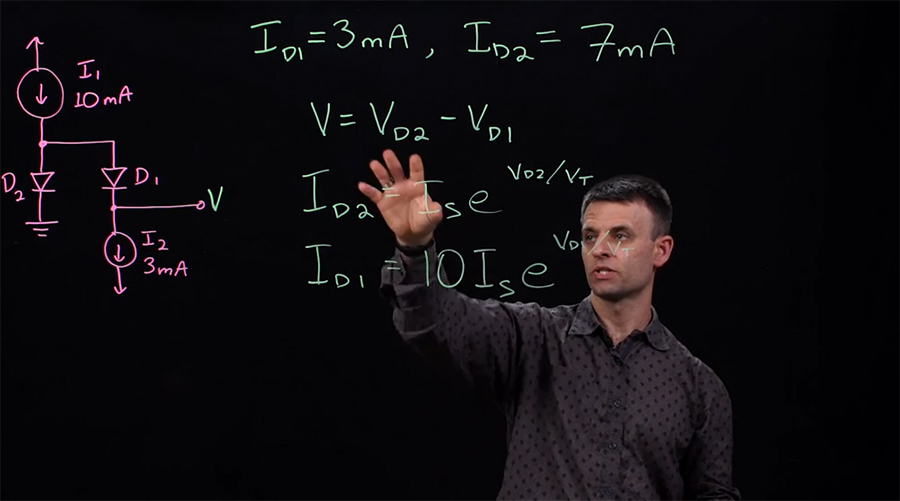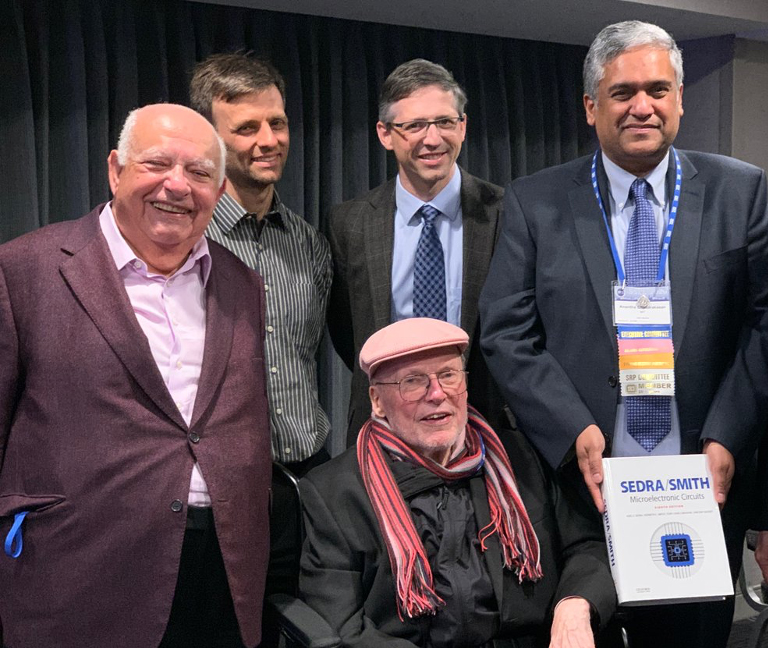Nearly 40 years ago while at U of T Engineering, Professors Adel Sedra and K.C. Smith (ECE) launched what would become the classic introductory textbook for students and instructors of electronics. This fall semester, the 8th edition will also be available as an enhanced e-book — ideally suited for the online course delivery model that is becoming prevalent in the era of COVID-19.
Microelectronic Circuits (known to students and instructors simply as “Sedra/Smith”) was revolutionary when it first appeared in the early 80s. To that point, the study of electronics had begun with first principles, a bottom-up approach.
“Sedra/Smith was the first book to say, if we’re really going to take full advantage of this new technology, we can’t be starting from ground zero all the time,” says Professor Tony Chan Carusone (ECE), one of the new edition’s four authors. “You don’t have to think in binary digits every time you sit down to write code. Similarly, you don’t have to think about electrons every time you design a circuit.”
Sedra/Smith’s reputation as the go-to textbook was further cemented by the richness of its problems and the expressiveness of its prose. The sustained effort to keep it up to date, with new editions every five years, means that even an instructor from outside the field could step in and find everything they need all laid out for them.
Today the book has sold more than one million copies and been translated into 11 different languages. “It’s not just a textbook. It’s a good read too,” says Chan Carusone.
He remembers the breakfast five years ago when Sedra first proposed that he take on the co-authorship of the next edition. “I jumped at it. I was honoured. It was important to me to keep U of T’s tradition as a worldwide leader in electronics.” University of Waterloo Professor and U of T Engineering alumnus Vincent Gaudet (ECE MASc 9T7, PhD 0T3) is the other next-generation author.
The guiding principle behind the digital enhancements in the 8th edition was to make Sedra/Smith even easier to learn from. Pop-ups over figures and equations provide quick reference, while collapsible tables preserve the reading flow. The show/hide function on each problem’s solution eliminates the need to constantly flip to the end of the book, and the work now includes 40 instructor videos linked to pivotal concepts in the material.
“We shot these videos using lightboard technology, writing with a marker on an illuminated pane of transparent plexiglass,” says Chan Carusone. “When you film it from the other side of the glass, you can see both my face and writing floating in midair.” He adds, “They’re a lot of fun.”

Chan Carusone emphasizes that the writing process — which took five years and reduced the overall length of the book by about 200 pages — was very collaborative.
“We surveyed both users and non-users of the book, and everyone was incredibly receptive and generous with feedback,” he says. “So many people felt they had a stake in this book.”
The new edition is arriving just as engineering schools around the world ramp up their efforts in e-learning. For example, changes to this year’s U of T Engineering classes include a remote access guarantee, which will allow every student to complete all academic requirements remotely.
Chan Carusone hopes that the care and effort that has gone into the enhanced digital content of Sedra/Smith will resonate with students who engage in remote learning.
“This is the first time I could imagine someone having only the e-book,” he says. “But in light of the recent pivot to online learning, this version could provide a better learning experience than the hard copy.”




